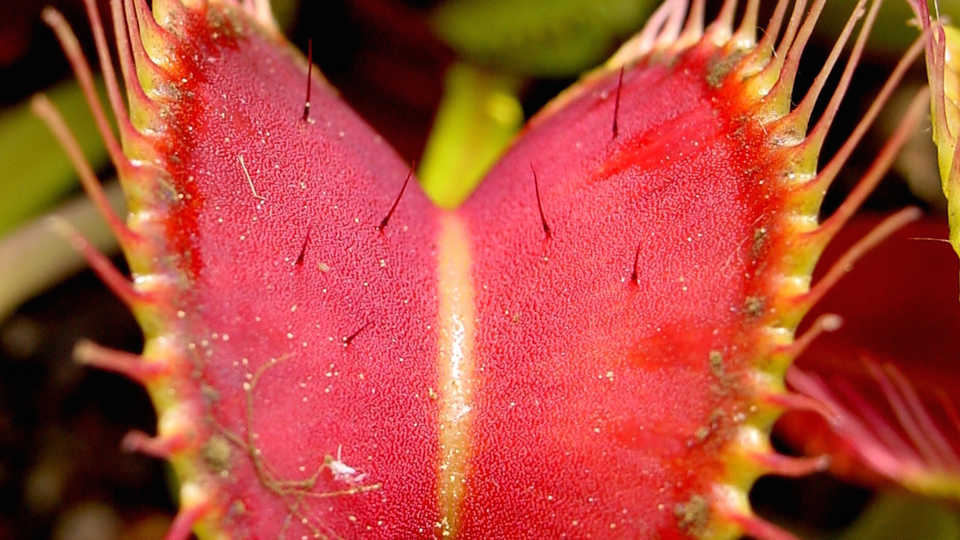Science News
Venus Flytrap Smarts

How does the carnivorous Venus flytrap know when an insect is in its midst? The trap has tiny trigger hairs that sense touch, but how does the plant know it’s an insect and not just a falling leaf or drop of rain?
Venus flytraps give off a fruity scent when they’re hungry, attracting insects and arachnids to their deadly leaves. However, the plants expend a lot of energy trapping and digesting their insect meal, so a false cue could be costly. Jennifer Böhm of the University of Würzburg and her colleagues knew that the pay-off of an insect meal is worth the energy—the nutrient- and sodium-rich insects provide nutrition where the soil doesn’t—but how can the plant be sure of the treat waiting for them?
The team experimented using crickets and found that the plant actually counts to determine its visitor. If the cricket triggered one of the tiny hairs on the trapping leaf, nothing happened. But if the insect triggered two of the tiny hairs within about 30 seconds of each other, the trap would close. At this point the trap becomes a “green stomach,” so called by the research team because glands on the inner surface of the trap produce digestive enzymes and transporters to take up nutrients. Again, the team found that it takes a specific number of triggers—think of a squirming insect trying to escape the trap—to release the digestive juices: five.
So the Venus flytrap expends no more energy than necessary and doesn’t waste a thing on fake prey by simply counting to five. The findings were published last week in Current Biology.
Image: Noah Elhardt